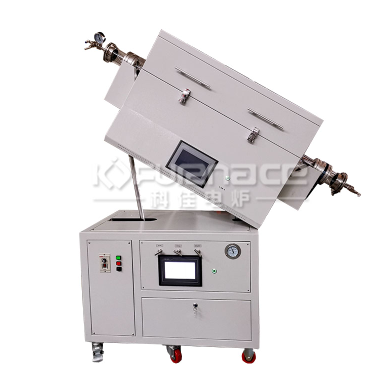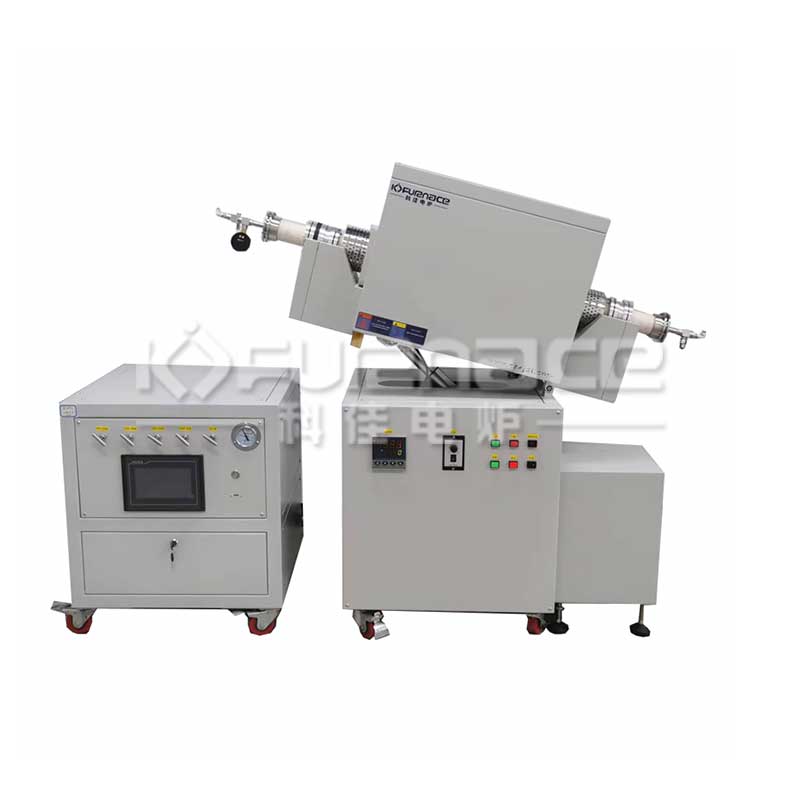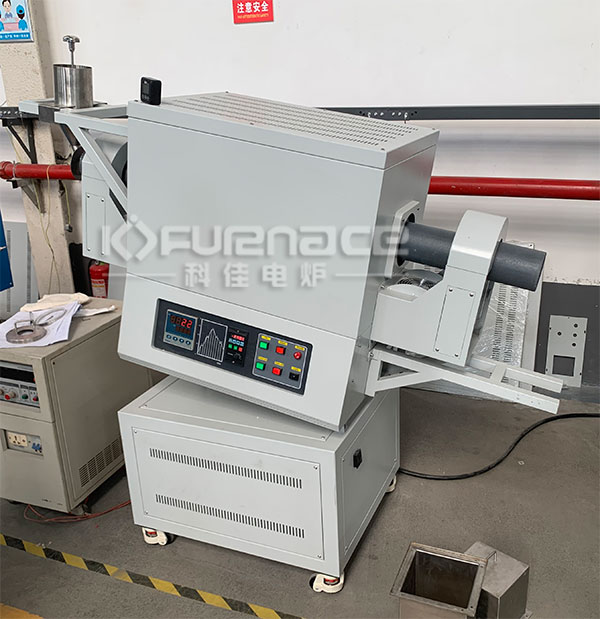A small rotary furnace is a small equipment used for heat treatment, sintering, roasting, drying and other processes, widely used in laboratory research, small-scale production, and specific industrial applications. So what are some things to pay attention to when choosing a small rotary furnace?

A commonly used small rotary furnace that can be tilted (click on the image to view product details)
1. Determine application requirements
Firstly, clarify the specific application scenarios and requirements of the rotary furnace, including:
Processing materials: The type of materials you will be processing (such as metal powders, ceramics, chemical products, etc.).
Process requirements: The required heat treatment process (such as sintering, roasting, drying, annealing, etc.).
Temperature range: The temperature range required by the process to ensure that the rotary furnace can reach and maintain these temperatures.
Atmosphere requirements: Do specific atmospheres (such as vacuum, inert gas, reducing gas, etc.) need to be used for processing.
2. Choose the appropriate specifications
Select appropriate furnace specifications based on processing capacity and production scale:
Size and capacity: Select the appropriate furnace size and capacity based on the processing capacity. Small rotary furnaces are usually suitable for laboratory and small batch production.
Processing time: Consider the processing time for each batch to ensure production efficiency meets requirements.
3. Functional characteristics
Select a rotary furnace with the required functional characteristics:
Temperature control: A high-precision temperature control system ensures stable and uniform temperature.
Rotation speed: Adjustable rotation speed to adapt to different process requirements.
Atmosphere control: If a specific atmosphere is required, choose a rotary furnace with an atmosphere control system.
Cooling system: Consider whether a fast cooling function is needed to shorten the production cycle.
4. Material and structure
Ensure that the material and structure of the rotary furnace are suitable for your application needs:
High temperature resistant materials: The furnace and other high-temperature components should use high-temperature resistant materials (such as high aluminum ceramics, silicon carbon rods, etc.).
Sealing performance: Good sealing performance, especially for processes that require specific atmospheres or vacuum environments.

Experimental small rotary furnace (click on image to view product details)
5. Automation and Control Systems
Modern rotary furnaces are typically equipped with advanced automation and control systems:
PLC control: A programmable logic controller (PLC) system that enables precise process control and automated operations.
Data recording: capable of recording and storing process parameters such as temperature, atmosphere, and speed for quality monitoring and process optimization.
6. Suppliers and after-sales service
Choose reputable suppliers and brands to ensure quality and reliable after-sales service:
Brand reputation: Choose brands and manufacturers with good reputation in the industry.
After sales service: Ensure that suppliers provide good after-sales service and technical support, including installation and debugging, training, and maintenance services.
7. Budget and cost
Choose a cost-effective rotary furnace based on budget:
Initial investment: Consider the purchase price of the rotary furnace.
Operating costs: including electricity consumption, maintenance costs, and gas consumption.
8. Environment and Safety
Ensure that the equipment meets environmental and safety requirements:
Environmental standards: Equipment should comply with local environmental regulations to reduce emissions and pollution.
Safety measures: The rotary furnace should be equipped with necessary safety devices and alarm systems to ensure safe operation.

A small rotary furnace that can replace furnace tubes on its own (click on the image to view product details)
Choosing a small rotary furnace requires comprehensive consideration of multiple factors, including production capacity, type of raw materials, energy consumption, operation and maintenance, equipment quality, and after-sales service. By carefully comparing and evaluating different brands and models of rotary furnaces, you can find equipment that suits your production needs.Click to learn more tube furnace! Or click on online customer service to learn more about product information!